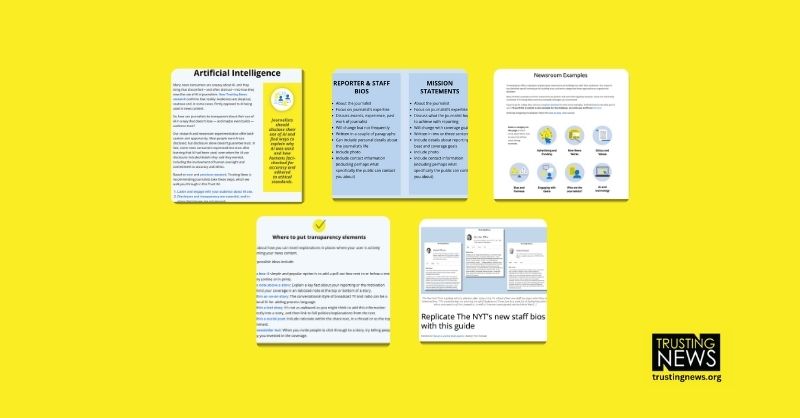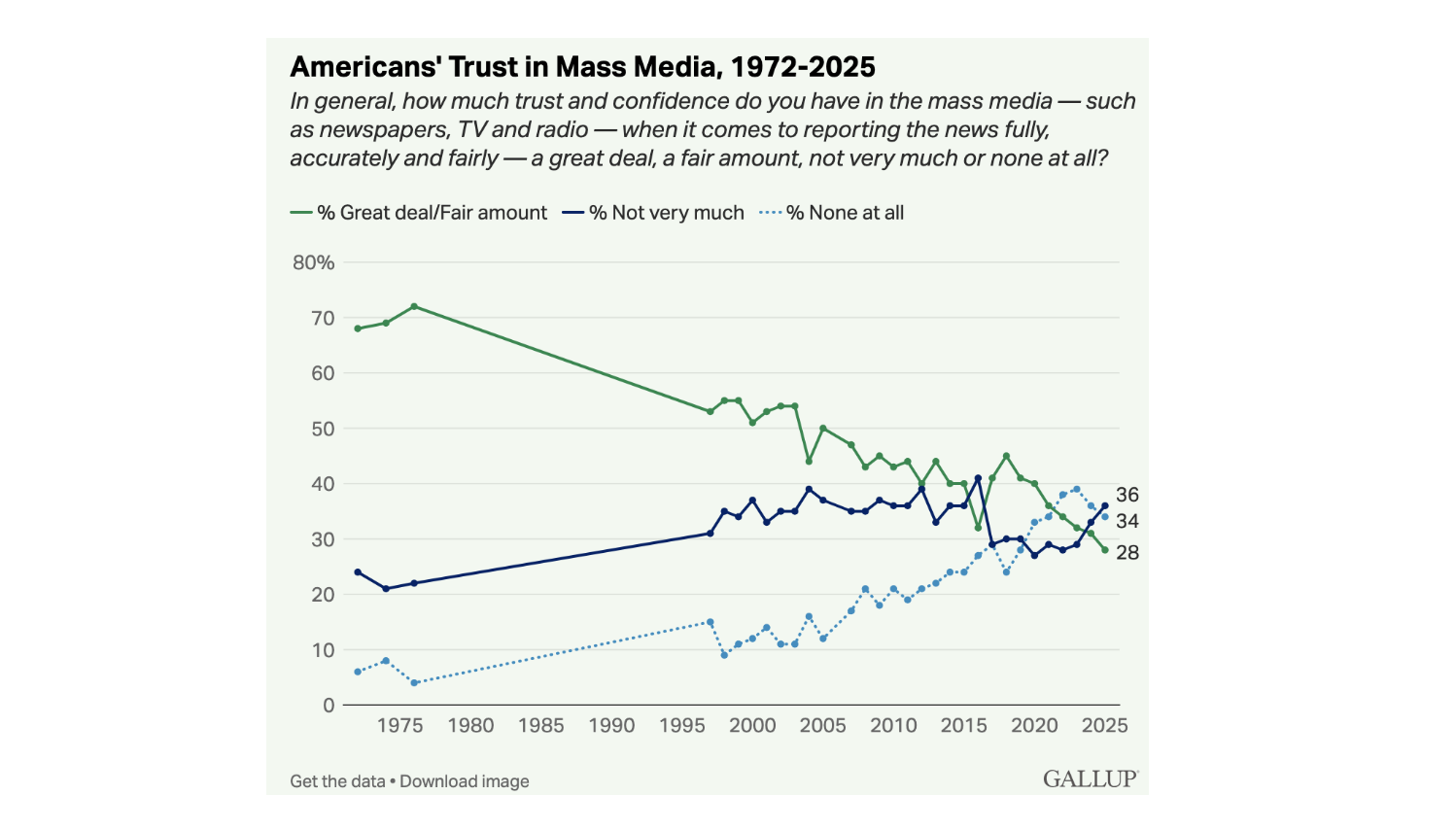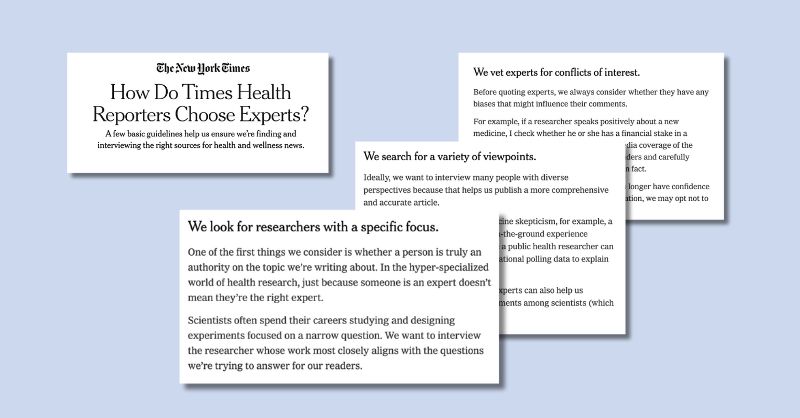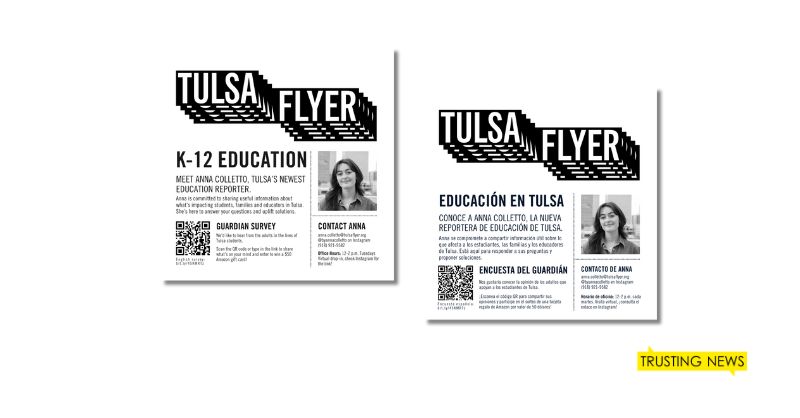
Note: This is the first installment of a three-part newsletter series on News Avoidance. Read part two, Tell news avoiders these things about your journalism, and part three, Adapt your products for news avoiders in three ways. The more people tune the news out, noting that it doesn’t feel relevant or important for their lives, […]
Learn about news avoiders with this guide
Note: This is the first installment of a three-part newsletter series on News Avoidance. Read part two, Tell news avoiders these things about your journalism, and part three, Adapt your products for news avoiders in three ways.
The more people tune the news out, noting that it doesn’t feel relevant or important for their lives, the more journalists should be paying attention.
People give many reasons why they avoid the news, but the bottom line is that we as journalists are missing the mark when it comes to meeting our communities’ information needs. It’s mission critical — for our newsrooms to survive and for our communities to thrive — that we work to be more relevant and accessible to people who are tuning out from the news.
A key step in that process is to understand how people are currently perceiving and experiencing the news, and what information gaps exist. This means examining whether we as news organizations are actually solving problems or meeting the information needs of our communities.
Today we’re excited to launch a guide to help journalists deepen this understanding of those in your community who are not currently engaged with your journalism, or with the news overall.
This News Avoider Interview guide is designed to guide journalists through having curiosity-driven conversations with news avoiders in their community to better understand their perceptions and experiences surrounding the news.
We’re focusing today’s newsletter on some insights and advice from partner journalists who tested out using this guide, in hopes that it helps you initiate this work in your own newsroom and community. Future newsletters will talk about changes journalists can make to better connect with news avoiders.

What journalists learned using this guide
As part of a recent newsroom program on confronting news avoidance, we had journalists in the cohort test using the News Avoider Interview Guide to talk to a news avoider in their community to help learn more about their perceptions of news.
Overall, these partner journalists heard many similar things that have been echoed in research around news avoidance. The news avoiders they talked to:
- Tended to avoid news that they felt they had no influence over or couldn’t act on. Journalists noted there was a general sense of fatigue and frustration about not being able to DO anything or be part of the solutions to the issues covered in the news.
- Filtered news based on topics they found valuable and news that felt relevant. People were willing to (and said that they did) engage with news that resonated with them and impacted their daily lives.
- Wanted news that was easy to digest. One news avoider specifically asked for news that was easier to understand and covered more 101-level knowledge about civic engagement.
- Valued hyper-local content. People wanted hyper-local news that went beyond just political and government coverage.
Here are a few things journalists said after having these conversations (we’re leaving these anonymous to respect the terms of our cohort agreement with newsrooms).
- The news avoider, “only really receives news through friends resharing things on social media, but that experience (and feeling like it was only fueling rage and/or creating echo chambers) was turning them off from seeking out news in general.”
- “There was ‘anxiety about the idea that bad news could just pop up and feel like an assault at any moment.’”
- “To my interview subject, the news was what’s on local TV news broadcasts or cable news channels, but information is stuff she finds for herself on the internet.”
- “I was surprised by the fact that even though my interviewee identified herself as a news avoider, she has a ton of places she is getting information.”
The majority of the journalists in the program noted that the insights gleaned from these interviews felt productive and helped ground them in the perceptions of news avoiders. These insights also helped guide these journalists as they worked to get on the record about how they can be an antidote to what frustrates people about the news (more about this in next week’s Trust Tips!).
We also know from previous research that journalists simply taking the time to talk and listen to people builds trust and goodwill. In one recent research project, 86% of community members interviewed said they felt a sense of trust building with the reporter or the news organization after the conversation, and 28% said they were considering subscribing. And importantly, journalists say it helps them better understand how to serve their audiences.
Advice from journalists using the guide
As journalists used this guide to talk with a news avoider in their community, we asked what advice they’d pass on to a journalist doing similar work.
Here are some of their suggestions:
- Focus on the emotions related to news. Many of the journalists noted that the most productive conversation came from asking about people’s emotions related to the news. This may feel out of your norm, but understanding people’s emotions surrounding news is key as 43% of people say the news makes them feel worse emotionally.
- Use the questions as a framework. Journalists said it works best to use these questions as a jumping-off point rather than asking them verbatim. They advised that you listen intently and ask any follow-up questions that may come up.
- Set expectations ahead of time. One of our newsroom partners shared the questions ahead of time to give the interviewee more time to review and feel at ease. Remember these people are doing you a favor! Do whatever you can to make the process more comfortable for them.
- Don’t take it personally. Listen with an open mind and try to see their point of view. Realize that when people are making assumptions about “the media” it’s not necessarily a reflection of you or your individual journalism.
Your turn! Using the guide in your newsroom
We’re excited to share this News Avoider Interview Guide, and we hope it’s used widely in newsrooms. The guide includes:
- A quick background on news avoidance
- Ideas on how to find a news avoider to talk to
- Tips for having a conversation
- A list of questions to ask
As you have conversations with news avoiders in your community, we recommend keeping feedback in a centralized location in the newsroom so it’s easy to spot themes and overlaps as you talk to more and more people. (This previous Trust Tips includes suggestions for making listening part of newsroom routines.)
One more thought before we sign off today from Matt Dempsey at Spotlight PA, one of our partner journalists in the program: “Newsrooms should have reporters do something like this on a regular basis … regularly engaging in sit-down interviews like this with people who aren’t part of our current audience would be enlightening on how we can make our work more appealing or interesting.”
Think about the impact this could have if newsrooms incorporated this practice into their larger efforts? How much benefit could there be if every reporter on staff did this once a month, and looked for themes?
Thanks to our partner journalists!
We’re grateful to partner newsrooms and journalists who helped us sharpen this interview guide! We can’t do the work we do at Trusting News without journalists willing to experiment and test strategies.
Thanks to: Patricia Dwyer-Morgan, HC Broadcasting; Cat DeLaura, Austin Daily; Drew Himmelstein, Islandport Media; Bradly Gill, WEHCO Media; Matt Dempsey, Spotlight PA; Kira Hoffelmeyer, KSL NewsRadio; Annelise Pierce, Shasta Scout; Danielle Rindler, Hearst; Kelly Cannon, Salt Lake Tribune; Sabrina Halvorson, AgNet Media; Blanca Méndez, Raquel Torres, Bria Woods, Iris Dimimck and Shari Biediger, San Antonio Report.
If you use the guide, we’d love to hear about how it went and if it felt useful! Reach out to our team on LinkedIn, X or email at info@trustingnews.org. We’ll be continually updating and revising the guide as we gather more feedback from journalists
At Trusting News, we learn how people decide what news to trust and turn that knowledge into actionable strategies for journalists. We train and empower journalists to take responsibility for demonstrating credibility and actively earning trust through transparency and engagement. Subscribe to our Trust Tips newsletter. Follow us on Twitter and Facebook. Read more about our work at TrustingNews.org.

Project manager Mollie Muchna (she/her) has spent the last 10 years working in audience and engagement journalism in local newsrooms across the Southwest. She lives in Tucson, Arizona, where she is also an adjunct professor at the University of Arizona’s School of Journalism. She can be reached at mollie@trustingnews.org and on Twitter @molliemuchna.



